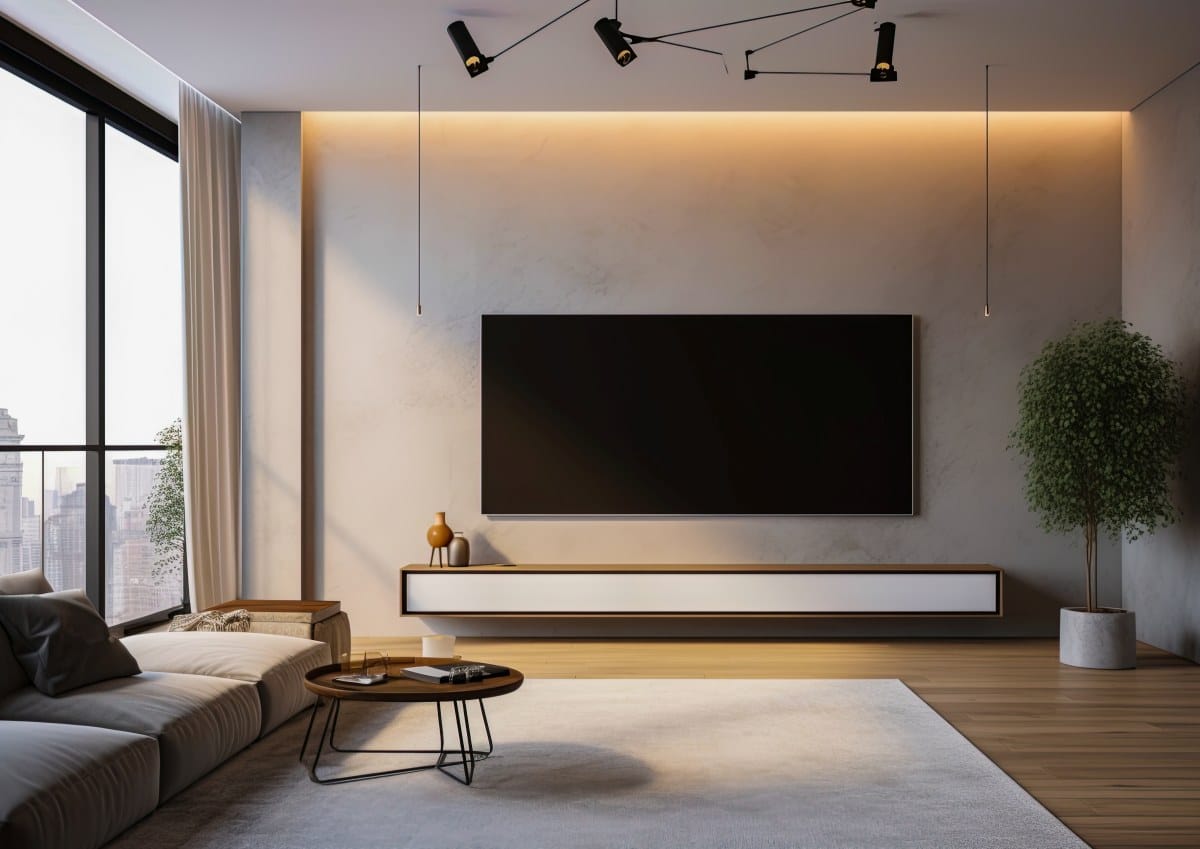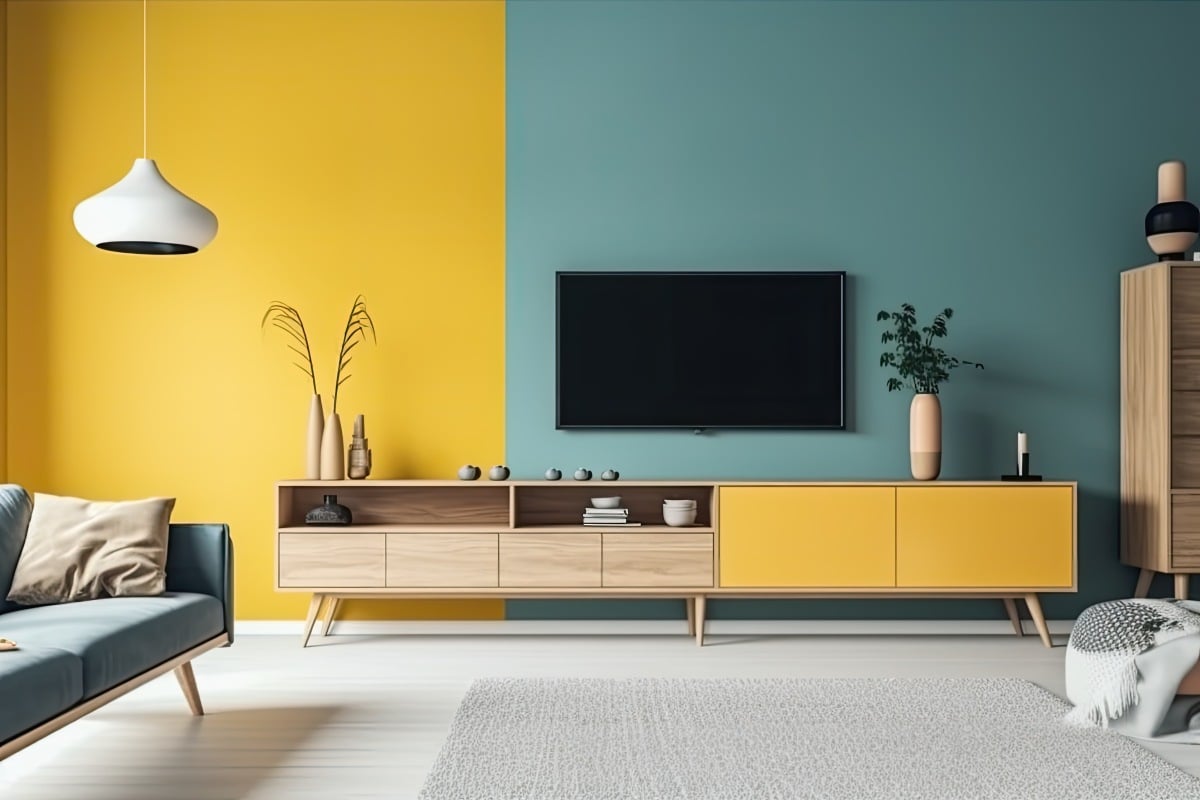the essentials in brief
What is the future of OLED and QLED?
The future of OLED and QLED is difficult to predict, but both are constantly evolving. A possible innovation is QD-OLED, a combination of OLED and quantum dots or micro LED. Read more about the technologies here...
For whom is QLED worthwhile?
QLED is worth it if you want a bright and colorful TV that looks good even in sunny rooms. QLED offers high peak brightness and wide color gamut thanks to the quantum dot layer in the backlight. In comparison…
Is OLED, 4K or QLED better?
OLED, 4K and QLED refer to different aspects of a TV. OLED is a display technology, 4K is a resolution, and QLED is a variant of LCD technology. All three can be combined with each other, e.g. 4K OLED TVs and 4K QLED TVs.
Are you looking for a new TV but don't know whether to go with QLED vs. OLED? Don't worry, we're happy to help you. In this blog article you will learn everything you need to know about the two display technologies in order to make the best choice for your home cinema.
We'll explain the pros and cons of QLED and OLED, show you how they stack up in different categories Image quality, brightness, contrast, colors and lifespan and give you tips on what to look out for when buying. We also answer the most frequently asked questions about QLED vs. OLED.
QLED vs. OLED: The display technologies in comparison

To understand how QLED and OLED differ, we first need to take a look at how they work. Both are so-called flat screens, which consist of many small picture elements, the so-called pixels. Each pixel consists of three sub-pixels in the primary colors red, green and blue (RGB), which can be mixed to display all other colors. The The difference is how those pixels are illuminated.
OLED: high-end display with self-illuminating pixels
OLED stands for Organic Light Emitting Diode. This means each pixel is made of an organic material that emits light when current is passed through it. This has the advantage that each pixel can be controlled individually and switched off completely if it is to be displayed in black.
This leads to a perfect black value and a high contrast ratio. In addition, OLED pixels are very thin and flexible, so you can very thin and flexible displays can build.
Tip: When buying an OLED television, make sure you have a good image processor that optimizes the image and avoids artifacts.
QLED: LCD TV with better colors
QLED stands for Quantum Dot Light Emitting Diode. But that doesn't mean that QLED is a standalone display technology like OLED. Rather, it is a further development of LCD technology (Liquid Crystal Display), which is based on a liquid crystal layer.
This layer can transmit or block light depending on how it is electrically driven. To light the picture does an LCD TV need a light source in the background (backlight), which mostly consists of LEDs.
The trick with QLED is that the backlight contains an additional layer of quantum dots that split the light into different colors. This leads to higher color accuracy and a larger color space. Besides that the backlight can be very bright, resulting in high peak brightness and a good HDR experience.
Note: QLED is a Samsung brand that is also licensed by other manufacturers such as TCL or Hisense. Other names for similar technologies are NanoCell (LG) or Triluminos (Sony).
QLED vs. OLED: The categories in comparison

Now that we know how QLED and OLED work, we can compare them in different categories. We will focus on the following aspects: image quality, brightness, contrast, colors and lifespan.
1. Image quality: OLED has the edge
The picture quality is of course the most important criterion for a television. Many factors such as resolution, refresh rate, viewing angle, motion sharpness and image optimization play a role here. Overall one can say that OLED TVs offer better picture quality than QLED TVs, mainly because of the perfect black level and the high contrast ratio.
OLED TVs also have a better viewing angle, ie that Image does not lose quality when viewed from the side. In addition, OLED televisions often have a faster response time, which contributes to better moving image sharpness.
However, QLED TVs aren't far behind and can even match or be better in some areas. Have so QLED TVs often have a higher resolution than OLED TVs, for example 8K instead of 4K. This makes little difference with normal seat spacing, but can be relevant for very large screens or VR applications.
In addition, QLED TVs often have a higher refresh rate than OLED TVs, for example 120 instead of 60 Hz smoother display of fast movements or games.
By the way: The resolution indicates how many pixels a screen has. The more pixels, the sharper the image. The refresh rate indicates how often an image is updated per second. The higher the refresh rate, the smoother the picture.
2. Brightness: QLED shines brighter
Brightness is another important factor in a TV, especially when placed in a bright room or when viewing HDR content. HDR stands for High Dynamic Range and means that Image shows more detail in the light and dark areas. However, this requires a TV that can reach a high peak brightness.
This is where QLED TVs have a clear advantage over OLED TVs, as they can use a very bright backlight. QLED TVs can reach peak brightness levels in excess of 1000 nits, while OLED TVs mostly stay under 800 nits. This is clearly noticeable in the HDR display, since QLED televisions can display more details in the bright areas.
But OLED TVs also have their strengths here, because they have a better black level than QLED TVs. This means they can display more detail in dark areas and create higher contrast. Also are OLED TVs less prone to reflections or glare as a QLED TV.
3. Contrast: OLED delivers perfect black
The contrast is that Ratio between the brightest and the darkest point on the screen. The higher the contrast, the better the picture. The contrast depends heavily on the display technology because it determines how well black can be represented.
OLED TVs have an unbeatable advantage over QLED TVs here, as they can produce perfect blacks. Because OLED pixels can switch off completely, if they should display black.
This results in an infinite contrast ratio that no other display can match. That makes OLED TV ideal for films or series with many dark scenes, such as Game of Thrones or Stranger Things.
But QLED TVs also have good contrast, which is sufficient for most content. That's because QLED TVs have high peak brightness, which increases contrast. Besides that QLED TVs with a good dimming technique can split and adjust the backlight into individual zonesto improve the black level. This is known as local dimming or full array local dimming (FALD).
Note: Contrast can also be affected by other factors such as ambient lighting or image settings. You should therefore adjust your television so that it corresponds to your viewing habits.
4. Colors: QLED offers more colors
Another important factor when it comes to a television is the colors, especially if you are watching colored content or if you value a realistic display. The colors depend on various factors such as color space, color accuracy and color brightness.
QLED TVs have an advantage over OLED TVs here because they can display more colors. That's because QLED TVs have a quantum dot layer in the backlight, which splits the light into different colors. This creates a larger color space that covers more color nuances.
so can QLED TVs display up to 100 percent of the DCI-P3 color space, while OLED TVs tend to stay under 90 percent. The DCI-P3 color space is a standard for digital cinema and HDR content.
But OLED televisions also have good color reproduction, which is sufficient for most content. Background is that OLED TVs have high color accuracy, ie the colors are displayed as intended by the designer. In addition, OLED TVs have high color brightness, which means that the colors do not fade even when the brightness is high.
5. Lifespan: QLED lasts longer
Lifespan is another important factor in a TV, especially if you intend to use it for a long time or switch it on frequently. It depends on various factors, such as usage time, brightness setting and display technology.
QLED TVs actually last longer. Reason is that QLED TV Use inorganic materials that are less prone to aging or scorching.
burn-in: Image retention means that an image becomes permanently etched on the screen if it is displayed for too long. This can happen, for example, if you frequently watch news programs or video games with static elements.
QLED TVs have an estimated lifespan of over 100.000 hours, eh corresponds to about 11 years. However, OLED TVs have a shorter lifespan because they use organic materials that can age or burn in faster.
The OLED pixels can wear down and lose brightness over time, especially the blue pixels. OLED TVs have an estimated lifespan of around 50.000 hours, huh are about 5 years.
QLED vs. OLED: A tough race
As you can see, there is no clear answer to the question of whether QLED or OLED is better. Both display technologies have their advantages and disadvantages, which vary depending on your personal preferences and viewing habits. Depending on what is more important to you, whether lifespan or high contrast display, your decision may vary.



